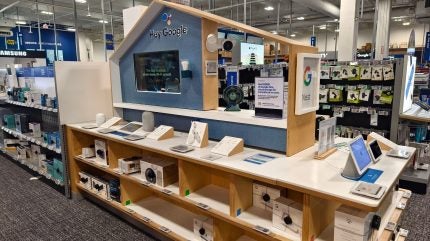
US multinational IT corporation Google has announced a significant sustainability achievement by making the packaging of its Pixel, Fitbit, and Nest devices 100% plastic-free.
This milestone aligns with the tech giant’s commitment announced in October 2020 to eliminate plastic from its hardware packaging by 2025.
At the time of announcing the commitment, Google had already reduced the plastic content in its packaging to 94%, with the remaining plastic components posing the greatest challenge for replacement.
The company has successfully replaced the last plastic elements such as shrink wrap and plastic tape, with fibre-based alternatives following through research and prototyping.
Google’s new paper for its packaging is claimed to be three times more durable and 70% more stretchable compared to the previous material, contributing to lighter packaging that reduces the carbon footprint during transport.
The company developed the new paper through a partnership with a material supplier.
How well do you really know your competitors?
Access the most comprehensive Company Profiles on the market, powered by GlobalData. Save hours of research. Gain competitive edge.

Thank you!
Your download email will arrive shortly
Not ready to buy yet? Download a free sample
We are confident about the unique quality of our Company Profiles. However, we want you to make the most beneficial decision for your business, so we offer a free sample that you can download by submitting the below form
By GlobalDataInside the box, Google has introduced a new moulded fibre pulp formula that provides secure protection for devices.
Partially made from recycled newspaper, this pulp not only provides secure protection but also complements the new paper’s aesthetic with its speckled appearance.
The packaging’s design also features a peelable closure label, ensuring security and ease of detection for tampering while also encouraging recycling.
Google industrial design director Claude Zellweger said: “These new materials were developed to make recycling easier for you. Internal research showed that the look and feel of packaging influences whether consumers recycle it, and whether recycling centres accept it.
“Our new design embodies this insight with a visually speckled texture and an uncoated surface that only does it look great, but looks recyclable.”



